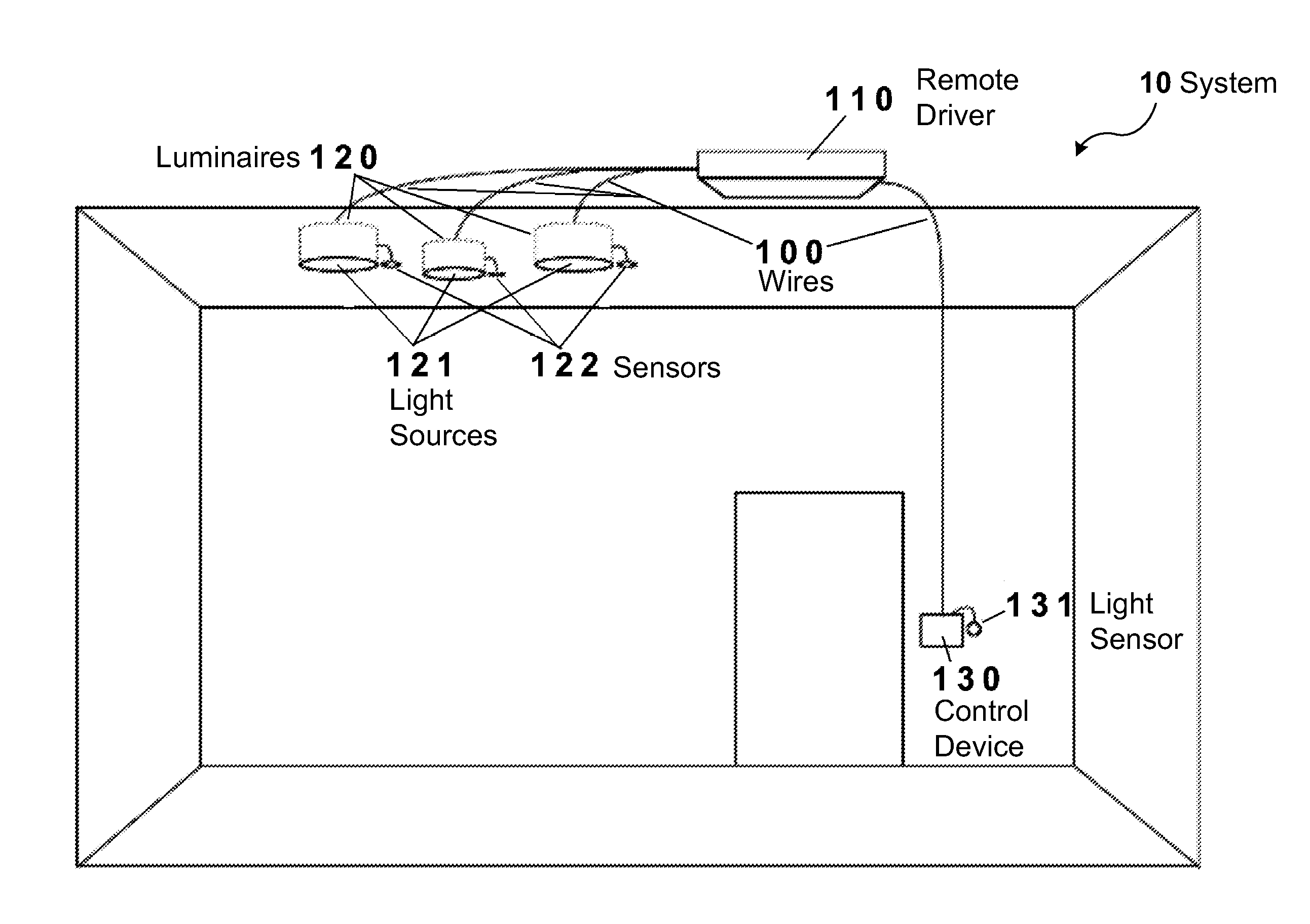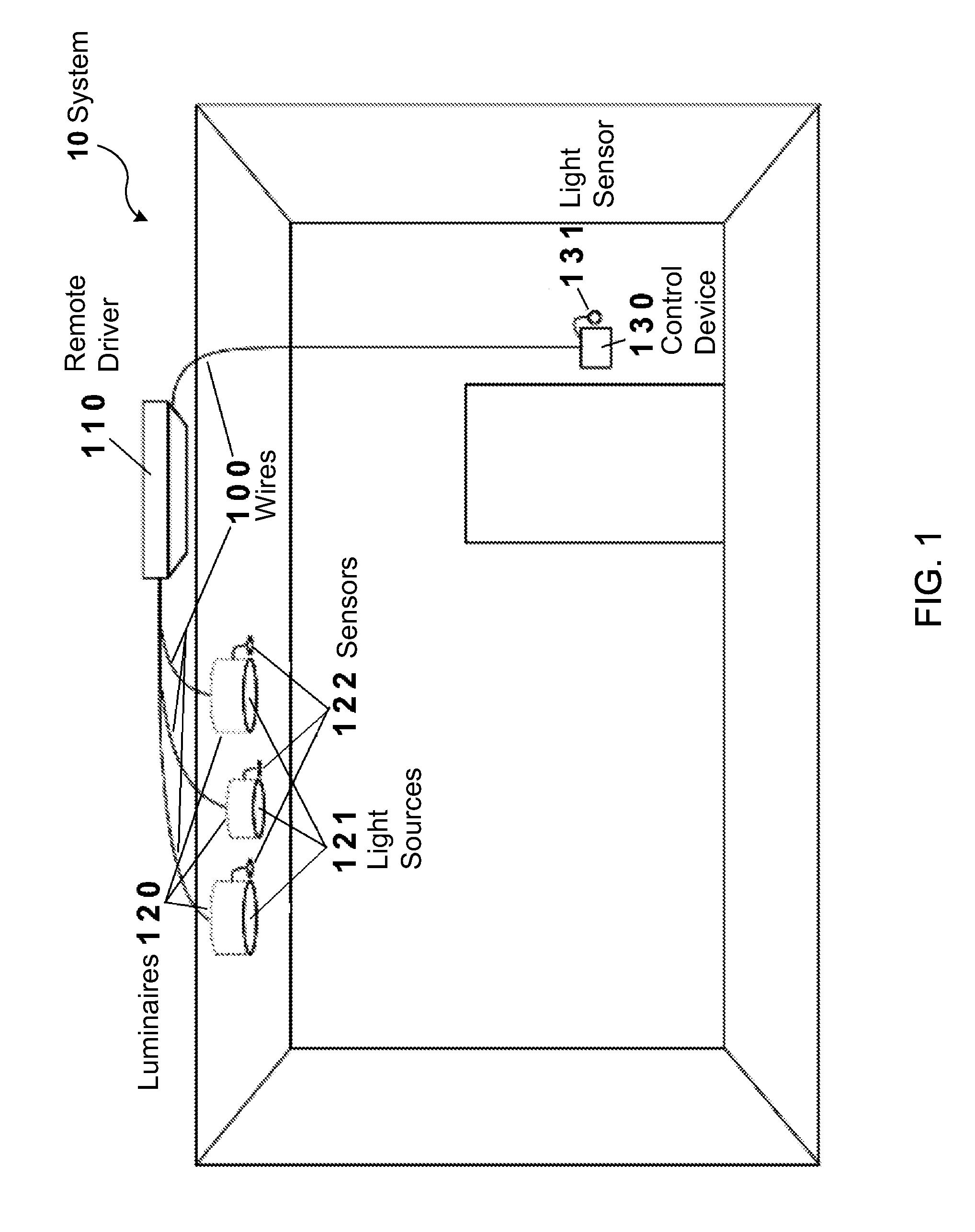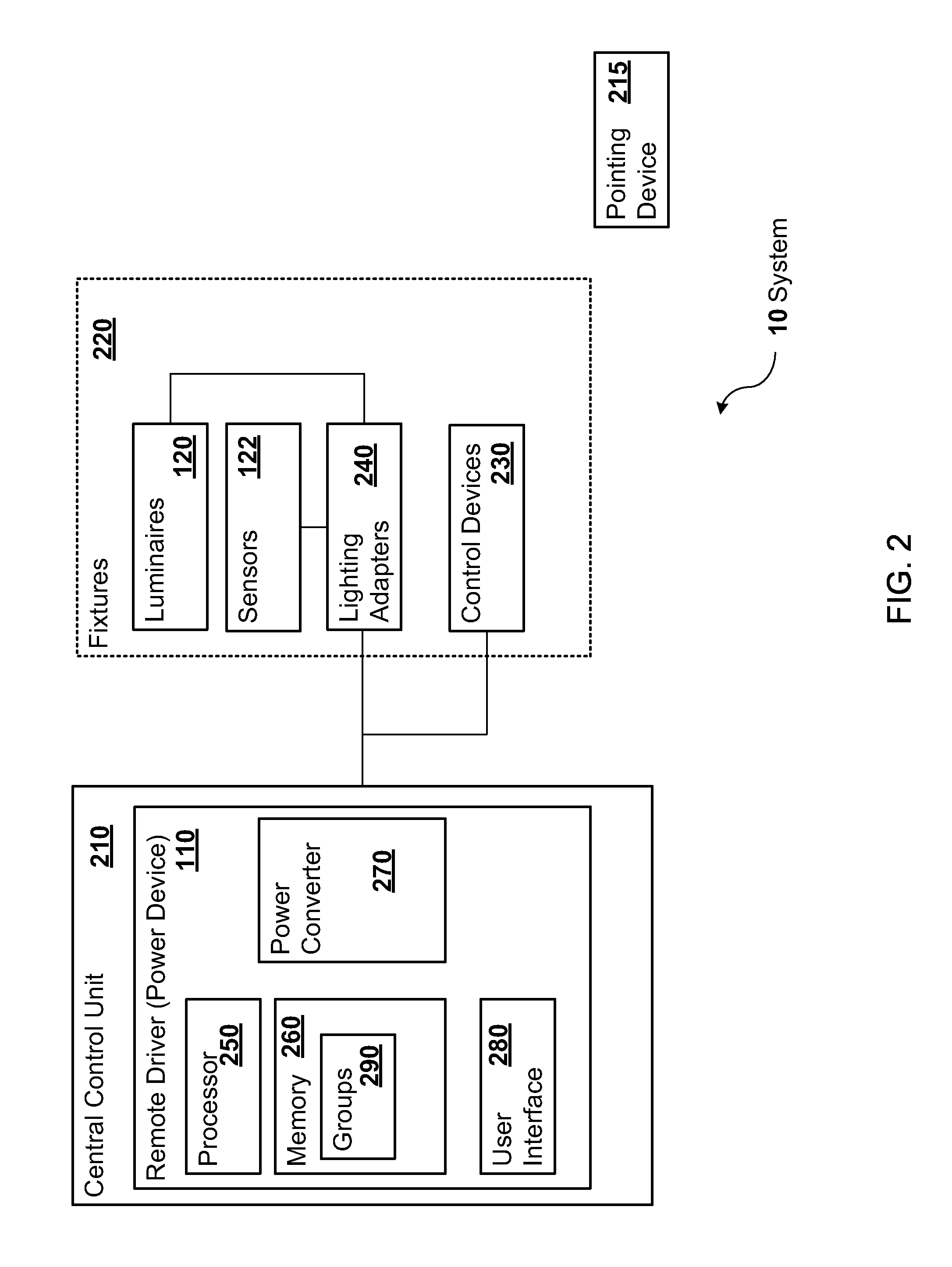Commissioning lighting systems
a lighting system and lighting technology, applied in the field of lighting systems, can solve the problems of inability to use combinations, inability to meet the needs of lighting users, etc., and achieve the effect of facilitating wide-spread adoption of sophisticated control systems
- Summary
- Abstract
- Description
- Claims
- Application Information
AI Technical Summary
Benefits of technology
Problems solved by technology
Method used
Image
Examples
Embodiment Construction
[0020]Before the present invention is described in detail, it is to be understood that unless otherwise indicated this invention is not limited to specific construction materials, electronic components, or the like, as such may vary. It is also to be understood that the terminology used herein is for the purpose of describing particular embodiments only and is not intended to limit the scope of the present invention.
[0021]As used herein and in the claims, the singular forms “a,”“an” and “the” may include plural referents unless the context clearly dictates otherwise. Thus, for example, reference to “a fixture” may include one or more fixtures; reference to “a sensor” may include one or more sensors, and so forth.
[0022]Where a range of values is provided, it is understood that each intervening value, to the tenth of the unit of the lower limit unless the context clearly dictates otherwise, between the upper and lower limit of that range, and any other stated or intervening value in t...
PUM
 Login to View More
Login to View More Abstract
Description
Claims
Application Information
 Login to View More
Login to View More - R&D
- Intellectual Property
- Life Sciences
- Materials
- Tech Scout
- Unparalleled Data Quality
- Higher Quality Content
- 60% Fewer Hallucinations
Browse by: Latest US Patents, China's latest patents, Technical Efficacy Thesaurus, Application Domain, Technology Topic, Popular Technical Reports.
© 2025 PatSnap. All rights reserved.Legal|Privacy policy|Modern Slavery Act Transparency Statement|Sitemap|About US| Contact US: help@patsnap.com



